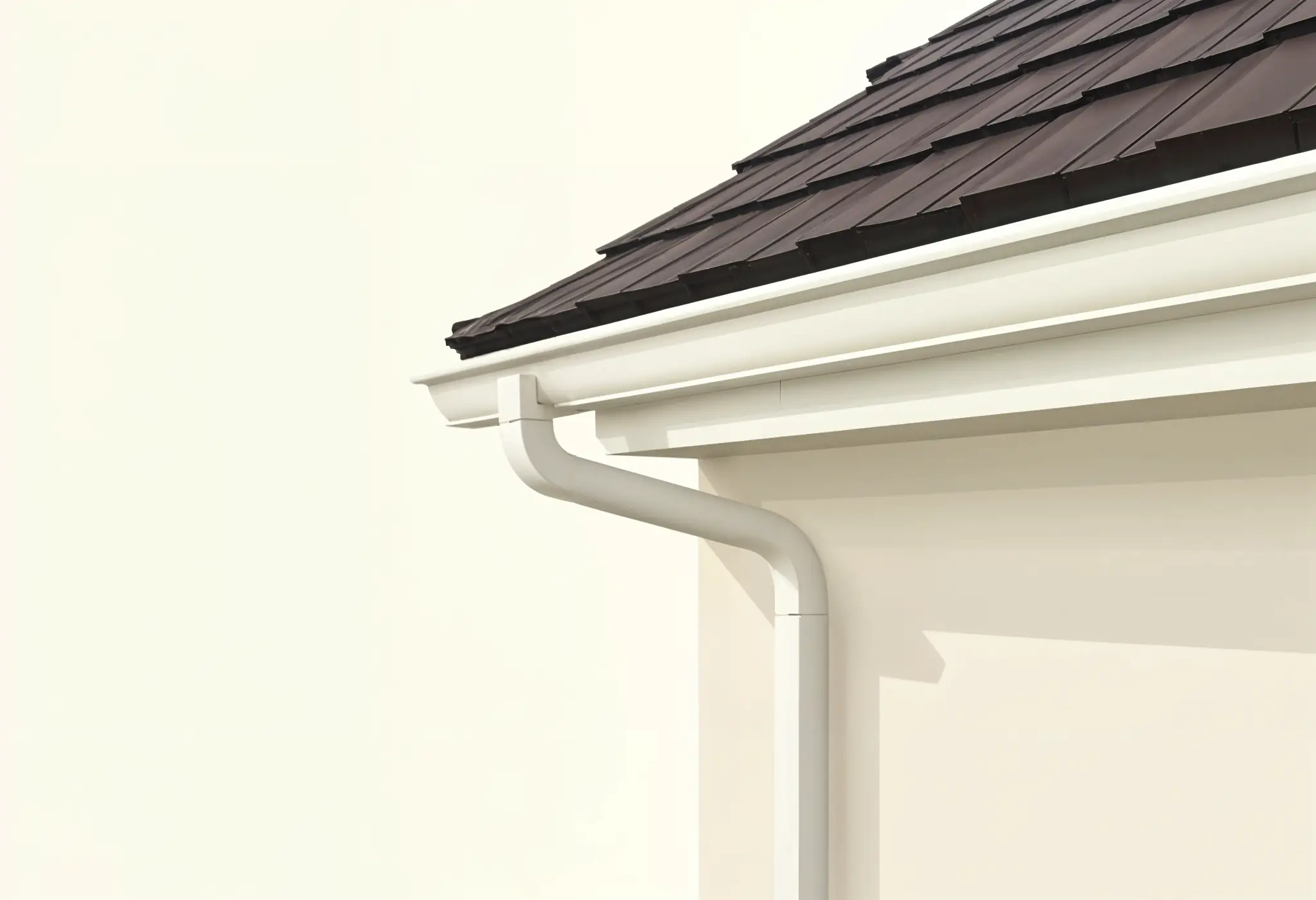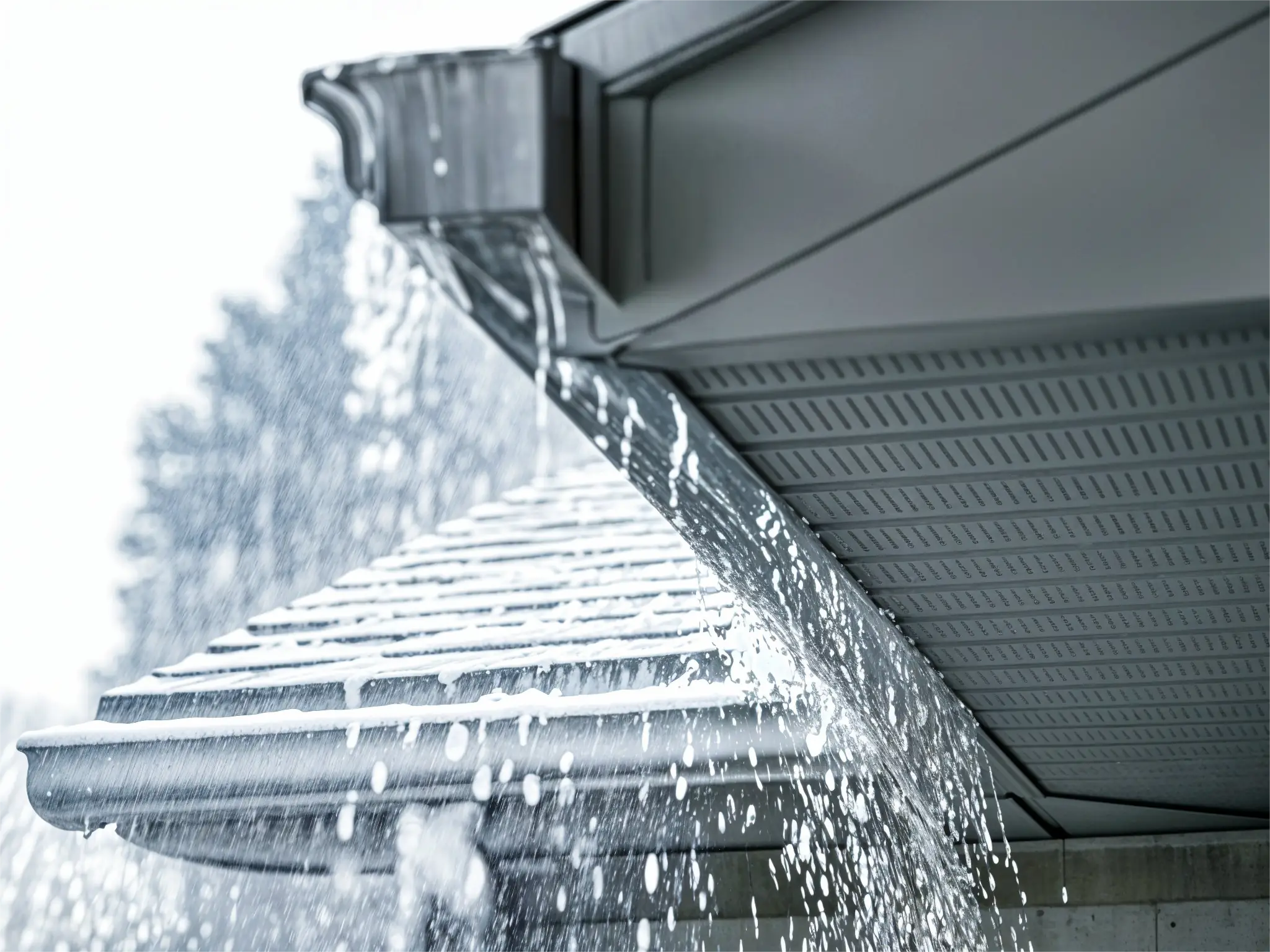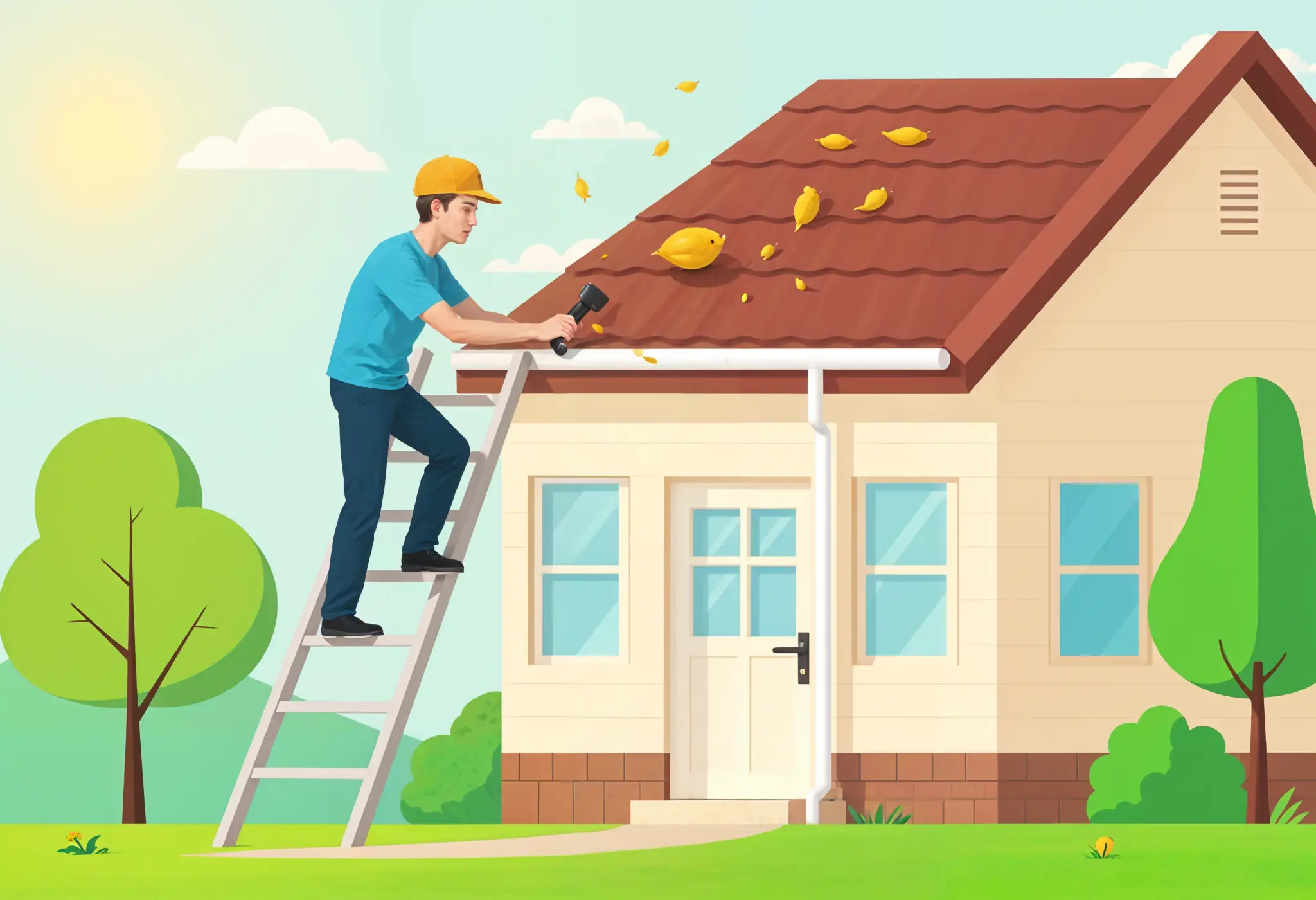Virginia Gutter Guide
Contents
Are gutters important for a house? In Virginia, where intense summer storms can overwhelm unprotected rain gutters, this question becomes critically important for your home's long-term health. The importance of gutters cannot be overstated when it comes to home protection. Without properly functioning gutter systems, even mild rainstorms can result in excess moisture buildup that weakens your home's structure over time.
Consider this: water flowing from your roof can collect around your home's foundation, slowly seeping into the substructure and compromising its integrity. In coastal areas like Virginia Beach, where seasonal rainfall is common, your gutter system plays a vital role in protecting your entire home from water damage and soil erosion. Essentially, gutters serve as your first line of defense, directing water runoff away from vulnerable areas including your roof, siding, and foundation.
Still wondering if you need gutters? This comprehensive guide will explore how gutters protect your Virginia home, factors to consider before installation, and expert maintenance tips to prevent costly water damage and maintain your property value. Let's dive into everything you need to know about this crucial component of your home's defense system.

How Gutters Work and Why They Matter
Your home's gutter system functions as a vital drainage network, quietly providing foundation protection and safeguarding your property from potentially serious water damage. Understanding how these systems work reveals why many experts consider them necessary for most homes.

Basic components of a roof and gutter system
A complete gutter system consists of several interconnected parts working together. The main channels (gutters) attach to your roof edges and collect rainwater. These troughs connect to downspouts - vertical pipes that carry water to ground level. Additional components include end caps that seal the gutter ends, miters that join corner sections, and elbows that redirect water flow around corners.
Most modern gutters use aluminum for durability and weather resistance, although other materials are available depending on your needs and budget. The attachment method matters too - while older systems relied on gutter spikes and ferrules, contemporary installations typically use hidden hangers secured directly to the fascia board.

How gutters direct rainwater away from your home
During rainfall, your gutters collect water flowing off the roof and channel it through a carefully designed pathway. The gutters are installed with a slight slope (typically ½ inch per 10 feet) to ensure water flows toward the downspouts. This gutter pitch is crucial for effective water management. Once water reaches the downspouts, it's carried safely away from your home's foundation.
This systematic water runoff management prevents erosion around your property while protecting critical structural elements. Consequently, a properly functioning gutter system helps maintain your home's foundation integrity, preserves exterior surfaces, and prevents landscape deterioration.
What happens when gutters are missing or clogged
Without gutters - or when they're clogged with debris - rainwater cascades directly off your roof, creating numerous problems. Water pooling around your foundation can lead to cracks, settlement issues, and eventual structural damage. Moreover, basement flooding becomes more likely as water seeps through foundation walls, potentially leading to mold growth.
Uncontrolled water flow also damages exterior components. Your fascia boards may rot, allowing moisture to penetrate behind your siding. This wood rot can quickly spread, compromising your home's structural integrity. Additionally, your roof's edge becomes vulnerable to water infiltration, potentially causing decking damage and compromising shingles.
Furthermore, clogged gutters create perfect breeding grounds for pests like mosquitoes and can lead to ice dams during winter months, forcing water under your shingles and into your home. These issues not only affect your home's functionality but can also significantly impact its curb appeal and overall aesthetic appeal.
Don’t wait for costly water damage to show up around your home. Schedule a professional gutter inspection or installation with My Modern Renovations today and ensure your Virginia property is built to withstand every season.

Do You Really Need Gutters? Factors to Consider
While gutters offer significant protection, not every home requires the same gutter setup. Understanding the specific factors that influence this necessity helps you make informed decisions about protecting your Virginia property.
Rainfall and snowfall levels in your area
The climate in your region significantly impacts whether gutters are essential. Homes in areas with frequent heavy rainfall or snow, like many parts of Virginia, benefit greatly from comprehensive gutter systems that can manage substantial water volumes. In contrast, properties in arid regions with minimal precipitation might function adequately without extensive guttering.
For Virginia homeowners specifically, regular rain and snow patterns generally necessitate proper gutter installation to prevent water damage and storm damage. Without this protection, you risk foundation erosion, basement flooding, and various other moisture-related problems.

Slope of the land around your home
The natural grading around your property plays a crucial role in water management. If your home sits at the bottom of a hill or upward slope, a gutter system becomes practically mandatory. Otherwise, rainwater from these slopes could accumulate around your foundation rather than flowing away from it, potentially leading to soil erosion and foundation cracks.
Ideally, your property should have a downward slope extending from the foundation - typically 5% or about 6 inches over 10 feet. With proper grading, water naturally moves away from your home's base, reducing potential damage. However, regardless of slope quality, gutters provide an additional layer of protection by controlling runoff more effectively.
Roof overhang and ground surface type
Your roof's design affects gutter necessity as well. Homes with substantial overhangs may naturally direct water away from the foundation, potentially reducing gutter requirements in certain areas. These extended eaves act as a shield, protecting your walls and foundation from rain and snow.
Conversely, if your roof overhang fits close to your home's siding, gutters become essential to prevent water trenching and foundation damage. Additionally, clay-rich soil, common in parts of Virginia, absorbs and drains water more slowly, making gutter systems particularly important for effective water runoff management.
Installing Gutters the Right Way
Once you've decided gutters are necessary for your home, proper installation becomes crucial for their effectiveness. Preparing thoroughly and following correct techniques ensures your gutter system provides maximum protection and enhances your home's weather resistance.
Checking fascia and roof condition
Inspect your fascia boards for signs of rot or damage before starting any gutter installation. These boards serve as the mounting surface for your gutters, thus their integrity directly affects system stability. Additionally, examine your fascia for soft, sponge-like areas indicating water damage or mold growth. Make necessary repairs to damaged sections first, since installing gutters on compromised fascia virtually guarantees future problems.
Another critical step involves checking the caulking between your roof edge and existing gutters if you're replacing an old system. Fresh caulking helps seal gaps that might allow water infiltration. Furthermore, ensure your drip edge is intact since it protects the fascia from water damage and potential wood rot.
Proper slope and downspout placement
For gutters to function correctly, they must have a precise slope - typically ¼ inch for every 10 feet of gutter length. This slight angle, known as gutter pitch, ensures water flows toward downspouts instead of pooling. For gutter runs exceeding 40 feet, pitch the gutters from the middle toward downspouts at each end, or slope from both ends toward a central downspout.
Regarding downspouts, proper placement is equally important. Install one downspout for every 30-40 feet of gutter. Position them at corners whenever possible and ensure they extend at least 4-6 feet away from your foundation. This distance prevents water from seeping into your foundation or basement, providing crucial foundation protection.
Choosing the right gutter width and material
Standard 5-inch K-style gutters work well for most homes. Nevertheless, if you have a large roof or live in an area with heavy rainfall, consider 6-inch gutters. The material choice depends on durability needs and budget constraints. Aluminum remains popular due to its lightweight nature, rust resistance, and reasonable cost. Alternatively, copper gutters offer exceptional longevity and aesthetic appeal but come at a premium price, while vinyl provides an economical option for DIY installations.
Our team handles everything from proper slope setup to material selection, ensuring your gutters protect what matters most. Whether it’s a new install or replacing damaged lines, we’re your go-to Virginia contractor.
Maintaining Gutters to Prevent Roof Damage
Regular gutter maintenance is the key to ensuring your gutters continue protecting your Virginia home year after year. Without proper care, even well-installed gutters can fail, leading to serious roof and foundation damage.

How often to clean your gutters
Establishing a consistent cleaning schedule prevents debris buildup that can compromise your entire gutter system. Most experts recommend cleaning gutters at least twice yearly - once in spring and once in fall. This baseline schedule works well for homes in regions with mild climates.
However, certain conditions require more frequent attention:
- Homes with nearby trees need cleaning every three months, especially those with pine or eucalyptus trees that shed year-round
- After heavy storms or severe weather events that may cause storm damage
- Following winter when gutters typically accumulate the most debris
- Early fall when trees begin shedding leaves
Neglecting regular cleaning can result in leaks, water damage, mold infestations, and premature roof replacement. Indeed, clogged gutters create perfect breeding grounds for mosquitoes and other pests while putting excessive weight on your roof structure.
When to inspect for cracks or leaks
Beyond routine cleaning, regular inspections help identify potential problems before they escalate. Primarily, inspect your gutters:
- After any significant storm or weather event
- Whenever you notice visible debris accumulation
- During seasonal transitions, especially after winter
- Monthly if you have many trees or live in areas with extreme weather
Use a garden hose to flush water through clean gutters, watching carefully for leaks or improper drainage. Additionally, check for proper attachment to the house, as loose brackets can affect performance and compromise your home's weather resistance.
Signs it's time to replace your gutters
Eventually, all gutters need replacement. Look for these telltale indicators:
- Cracks or splits, even small ones that will inevitably grow larger
- Sagging sections or gutters pulling away from the house
- Water damage on siding or peeling exterior paint
- Mildew in your attic or basement, suggesting water infiltration
- Pooling water near your foundation despite regular cleaning
- Rusty spots or corrosion that indicate deterioration
Most gutters have a lifespan of 20-30 years depending on material and maintenance quality. Consistently addressing small issues through regular gutter maintenance will extend this lifespan, protecting both your roof and foundation from water damage while minimizing long-term maintenance costs.
Avoid cracks, leaks, and expensive repairs. Let our experts design a system that fits your home, landscape, and budget. Built for performance. Backed by craftsmanship.
Conclusion
Throughout this guide, we've established that gutters serve as more than just a home accessory - they function as a critical defense system for your Virginia property. Certainly, the combination of Virginia's heavy rainfall patterns and varying soil conditions makes proper water management essential for maintaining your home's structural integrity. Without adequate gutters, water damage silently threatens your foundation, siding, roof, and landscape.
Remember that the right gutter system depends on several factors specific to your property. Your home's location, surrounding terrain, roof design, and local weather patterns all play significant roles in determining the ideal gutter configuration. Additionally, even the best gutters require consistent maintenance to function properly, with regular cleaning and inspections preventing costly repairs down the road.
The consequences of neglecting your gutter system can be severe and far-reaching. Water pooling around foundations leads to cracks and settlement issues, while moisture penetration causes rot in fascia boards and roof edges. Therefore, investing in quality gutters now saves you from extensive repairs later and contributes to significant cost savings over time. Protect your Virginia home with expert roofing and gutter systems you can count on. Contact My Modern Renovations today for a free estimate and long-lasting peace of mind.
Lastly, whether you're installing new gutters or maintaining existing ones, taking proactive steps to manage water flow around your home will preserve your property's value and structural health for years to come. Your home deserves this essential protection against Virginia's unpredictable weather patterns, and well-maintained gutters can even enhance your home's curb appeal and overall aesthetic appeal.
Key Takeaways
For Virginia homeowners, gutters are essential protection against water damage from the state's heavy rainfall and seasonal storms.
• Gutters are crucial for Virginia homes - Heavy rainfall and clay-rich soil make proper water management essential to prevent foundation damage and structural issues.
• Installation requires proper slope and placement - Gutters need ¼ inch slope per 10 feet and downspouts every 30-40 feet to function effectively.
• Clean gutters twice yearly minimum - Spring and fall cleaning prevents debris buildup that can cause leaks, roof damage, and pest infestations.
• Replace gutters showing cracks or sagging - Water damage on siding, foundation pooling, or gutters pulling away indicate immediate replacement needs.
• Consider your property's specific factors - Roof overhang, land slope, and local rainfall levels determine the right gutter system for maximum protection.
Without proper gutters, Virginia homeowners risk costly foundation repairs, basement flooding, and roof damage. Regular maintenance and professional installation ensure your gutter system provides decades of reliable protection against water damage, preserving your home's value and structural integrity.
FAQs
Q1. Are gutters really necessary for homes in Virginia? Yes, gutters are essential for most Virginia homes due to the state's heavy rainfall and clay-rich soil. They protect your foundation, siding, and roof from water damage by directing rainwater away from your house, providing crucial home protection.
Q2. How often should I clean my gutters? Clean your gutters at least twice a year, typically in spring and fall. However, if you have trees near your home or live in an area with frequent storms, you may need to clean them more often, possibly every three months to prevent pest infestations and ensure proper water runoff.
Q3. What are the signs that I need to replace my gutters? Look for cracks or splits in the gutters, sagging sections, water damage on siding, mildew in your attic or basement, pooling water near your foundation, and rusty spots. These indicate it's time for gutter replacement to maintain your home's weather resistance and prevent potential foundation cracks.
Q4. What's the proper slope for gutter installation? Gutters should have a slope of about ¼ inch for every 10 feet of gutter length. This slight angle, known as gutter pitch, ensures water flows towards the downspouts instead of pooling in the gutters, which is crucial for effective water management.
Q5. Can I install gutters myself or should I hire a professional? While DIY installation is possible, professional installation is recommended for optimal performance. Professionals can ensure proper slope, secure attachment to your home, and appropriate downspout placement, which are crucial for effective water management and long-term cost savings.

4 steps to get your house safe
Book your Consultation
Removal & Preparation
Professional Installation
Post-Care & Warranty
Licensed & Insured
Turn Key Solution
Low Interest Financing







